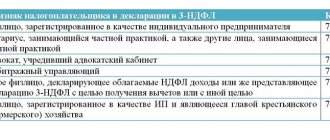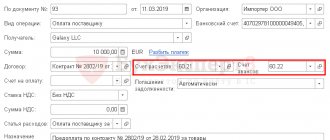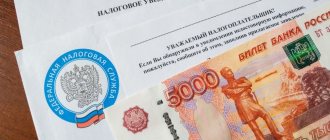In what cases does the obligation to pay excise taxes arise?
Excise taxpayers have a permanent status only if they regularly carry out transactions subject to this tax. For others, such a duty may arise from time to time. The fact is that any of the above-mentioned entities must pay excise tax only when they carry out any of the transactions subject to excise taxes, i.e. operation with excisable goods. If such circumstances have not arisen, then the subject is not considered an excise tax payer. This is directly stated in paragraph 2 of Art. 179 of the Tax Code of the Russian Federation.
What goods are excisable?
Excise goods are:
- ethyl alcohol, including denatured ethyl alcohol, raw alcohol, wine, grape, fruit, cognac, calvados, whiskey distillates;
- liquid alcohol-containing products with a volume fraction of ethanol of more than 9%, except for certain types:
- medicines;
- veterinary drugs;
- perfumery and cosmetic products;
- recycled alcohol production waste;
- wine materials;
- alcoholic products with a strength of more than 0.5%, with the exception of food products according to the list approved by Decree of the Government of the Russian Federation of June 28, 2012 No. 656;
- tobacco products;
- passenger cars;
- powerful motorcycles (with an engine over 150 hp);
- petrol;
- diesel fuel;
- motor oils;
- straight-run gasoline;
- household heating oil produced from diesel fractions of direct distillation and (or) secondary origin, boiling in the temperature range from 280 to 360 degrees Celsius;
- benzene, paraxylene, orthoxylene;
- aviation kerosene;
- natural gas (in cases provided for by international treaties of the Russian Federation).
Transactions giving rise to excise duty
The list of such operations is contained in Art. 182 of the Tax Code of the Russian Federation. Generally speaking, these include:
- any sale of excisable goods;
- transfer of produced excisable goods:
- the processor to the seller, as well as their receipt by the processor as payment for his services;
- within the organization for the further production of non-excisable goods (except for straight-run gasoline used for the further production of petrochemical products, or denatured ethyl alcohol for the production of non-alcohol-containing products if the organization has the necessary certificates to carry out operations with these substances);
- for your own needs;
- in the authorized capital, etc.;
- to a participant upon leaving the society;
- for processing on a toll basis.
- import of excisable goods into the country;
- receipt of certain types of excisable goods, including:
- denatured ethyl alcohol;
- straight-run gasoline;
- benzene, paraxylene or orthoxylene;
- aviation kerosene.
Attention! To carry out operations with certain goods, certificates for production, processing, etc., provided for in Art. 179.1–179.3 Tax Code of the Russian Federation.
What is not subject to excise taxes?
Provided that separate records are maintained, the following are not subject to excise taxes (Article 183 of the Tax Code of the Russian Federation):
- transfer within the organization of some excisable goods for the production of other excisable goods; the exception is provided in subpara. 22 clause 1 art. 182 of the Tax Code of the Russian Federation for ethyl alcohol;
- export of excisable goods, including if they are exported by the owner - the customer of processing or someone on his behalf, as well as the import of such goods into the port SEZ from the rest of our country;
- primary sale or transfer of confiscated, ownerless or rejected excisable goods for industrial processing under the control of customs or tax officials or for destruction;
- transfer within the organization:
- produced ethyl alcohol for the further production of alcohol-containing perfume and cosmetic aerosols, household chemicals;
- rectified ethyl alcohol produced from raw alcohol, to the division producing alcoholic beverages;
- produced alcoholic distillates (wine, grape, fruit, cognac, Calvados, whiskey) for aging or blending for the purpose of further production (bottling) of alcoholic products by the same organization;
- some operations with aviation kerosene and benzene, paraxylene and orthoxylene.
Types of taxation rates for excisable products and combined rates
The amount of excise tax payable is calculated as the product of the excise tax rate and the tax base.
Taxation rates for excisable products are established by Article 193 of the Tax Code of the Russian Federation and are the same for all subjects on the territory of the Russian Federation. These rates are divided into types: fixed, ad valorem and combined. Each type of rate applies to specific groups of excisable products.
Solid - set in absolute value per unit of the tax base (per 1 ton, per 1 liter, per number of units of a particular product). Ad valorem rates are calculated as a share of the value indicator (calculated value) of the goods.
A combined rate involves a combination of a flat rate and an ad valorem rate based on maximum retail prices. Combined rates are applied in our country to cigarettes and cigarettes. Until 2012, excise tax rates on these types of tobacco products were differentiated depending on the presence/absence of a filter.
Need some teacher advice on a similar topic? Ask a question to the teacher and get an answer in 15 minutes! Ask a Question
Definition 2
The maximum retail price is the price above which an enterprise (individual entrepreneur) operating in areas such as retail trade, catering, and the service sector can no longer sell a unit of consumer packaging (or pack) of tobacco products to consumers. This price is set by the taxpayer independently separately for each name of tobacco product (brand).
The calculation of excise taxes on tobacco products, on the one hand, ensures stable revenues of this tax to the budget in the event that there is a decrease in the volume of cigarette production in physical terms, and on the other hand, in the event of a decrease in maximum retail prices, it allows for the required level of income. This occurs by establishing dependence on maximum prices and establishing a minimum specific rate in a fixed amount along with a combined one.
The determination of the tax base depends on the applicable tax rate. If a specific rate is established for a product (flat or ad valorem), then the tax base will be considered the number of goods sold subject to tax collection. When establishing a combined rate (mixed), the tax base for a product will consist of two parts - the volume of goods sold in physical terms and the estimated cost of these goods.
Are individual entrepreneurs and special regime employees recognized as excise tax payers?
Tax Code of the Russian Federation in Art. 179 determines that excise tax payers are not only legal entities, but also individual entrepreneurs. The main condition here is the same for both categories of business entities - in order for them to be assigned this status, they must carry out the appropriate operations. The exception is resellers, but they will be discussed below in a separate chapter.
For special regimes, the situation requires a separate explanation: they may be excise tax payers, but they cannot always apply special regimes. Let us immediately note that we are talking here only about persons on the unified agricultural tax and the simplified tax system. We’ll talk about imputation a little lower.
Let us now explain our conclusion in more detail.
Systems such as the Unified Agricultural Tax and the simplified tax system are unacceptable for those who are engaged in the production of excisable goods, including on a toll basis (subclause 2, clause 6, article 346.2, subclause 8, clause 3, article 346.12 of the Tax Code of the Russian Federation, letters from the Ministry of Finance of Russia dated March 18, 2011 No. 03-07-06/70).
Important! Production for the purposes of the “excise” chapter of the Tax Code of the Russian Federation means not only the release of excisable goods in themselves, but also:
- bottling of alcoholic beverages and beer, which is part of the overall production process;
- any mixing of goods in places of their storage and sale (except for public catering), which results in an excisable product subject to excise tax at a higher rate than the raw materials themselves.
When carrying out transactions not with produced, but with purchased goods, it is possible to apply simplified taxation and agricultural tax.
It should be borne in mind that these special regimes do not exempt persons using them from paying excise taxes. After all, in paragraph 3 of Art. 346.1 and paragraphs. 2–3 tbsp. 346.11 of the Tax Code of the Russian Federation, excise taxes are not listed among the taxes that are replaced by special ones.
This means that a simplifier or a payer of the Unified Agricultural Tax, when performing excisable transactions permissible for him, must fulfill all the duties of an excise payer.
As for UTII, this regime does not establish any prohibitions or restrictions on working with excisable goods, but it also does not provide exemption from excise taxes. Therefore, the UTII payer can also be recognized as an excise tax payer.
New and old excise taxes
Starting from April 2021, the cost of excise stamps in Russia has increased: 1,700 rubles per 1,000 stamps (previously it was 1,600 rubles). The appearance of the excise stamp has also changed. The new brand is characterized by:
- background in the form of guilloche non-rapport grids with 2 iris transitions;
- aluminum hologram with bas-relief pattern, demetallization and color-changing properties;
- machine-readable anti-counterfeit elements;
- phosphorescence.
The stamp is made of self-adhesive paper that does not glow under the influence of ultraviolet radiation. This paper has chemical protection. On the reverse side, under the adhesive surface, there are visible designs and colorless text that can luminesce when exposed to light.
Still looking for an answer? It's easier to ask a lawyer! right now through the form (below), and our lawyer will call you back within 5 minutes with a free consultation.
Who will be the excise tax payer if the goods are sold by an intermediary?
When selling excisable goods, excise tax payers are almost always manufacturers.
The exception is the sale of confiscated, ownerless and abandoned valuables. Therefore, even when concluding an intermediary agreement, the manufacturer must pay excise tax. Moreover, the peculiarity of taxation here is that the excise tax must be charged at the time of transfer of excisable products to the intermediary, without waiting for the sale of goods to the final buyer. This is explained by the provisions of paragraph 2 of Art. 195 of the Tax Code of the Russian Federation, which defines the date of sale of excisable goods as the day of their shipment or transfer. Therefore, despite the retention of ownership of excisable goods by the manufacturer, the tax must be calculated immediately upon transferring them to the intermediary. This is what the Russian Ministry of Finance thinks (see letter dated October 1, 2008 No. 03-07-06/87). You can find more complete information on the topic in ConsultantPlus. Free trial access to the system for 2 days.
Calculation of the amount of excise taxes taking into account the combined rate
Formula for calculating the amount of excise taxes at the combined rate:
$AK=Hb\cdot Ci + R\cdot Рmax$, where:
- AK - total amount of excise tax,
- Nb - tax base in natural units,
- Ci is the tax rate per unit of production (in rubles),
- R - percentage,
- Pmax is the maximum retail price for a given group of goods.
The procedure for determining the rate that must be paid to the budget:
- The excise tax amount is determined at the combined rate;
- The minimum excise tax amount is determined by multiplying the number of cigarettes and cigarettes sold by the minimum excise tax rate established in rubles;
- The amount of excise tax calculated at the combined rate is compared with the minimum amount obtained. The largest amount is paid to the budget.
Need advice from a teacher in this subject area? Ask a question to the teacher and get an answer in 15 minutes! Ask a Question







